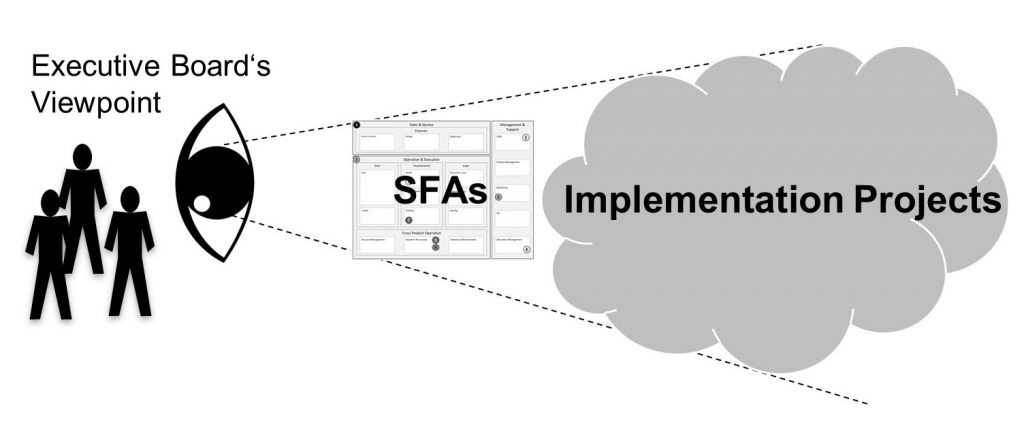AT#46: How to Make EAM a Management Instrument Part 2 – Connect with Strategic Goals

Defining a compelling vision should usually be the first step to start a digital transformation journey. Your executives craft a vision of your transformed company: what your company will stand for, how it will operate, which technology it will use to improve customer value. That vision highlighted some of the major landmarks on your transformation journey.
Derived from this vision, companies should define strategic goals that bring the vision to a more operational level. In nine out of ten companies I worked as an EA, however, projects – not goals – were used as the key element used in strategic planning. Boards used to budget and prioritize goals based on project status reports. They had to decide whether to invest in project ‘ABC’ or ‘XYZ’. Yes, project descriptions usually include some information about the functional scope of the projects, but these descriptions were rarely ever written in a way to assess the projects from the perspective of the business goals of the company.
The Architectural Thinking Framework includes a concept we call “Strategic Field of Action” (SFA) to solve this problem. SFAs formulate fields of action in a management-compatible way, focusing on business goals and how they are addressed in implementation.
Definition: Strategic Field of Action (SFA)
A Strategic Field of Action is an elaborated, structured definition of a strategic goal. It is the centerpiece of the strategic planning of a company. It links the myriads of projects of a company to a small set of business value-oriented, management compatible fields of action.
SFAs are the link between the operational planning of projects and the strategic architectural skeleton of the company. The viewpoint of the executive boards gets focused on strategic decisions and holistic architectural maps rather than operative project-level details blurring their sight field.

SFAs are connected to related parts of the strategic architectural model (like the capability map as shown above) and formulated from a business value point of view. Thus they are business-related even if their implementation is mostly technical. SFAs are the bridge between the vision and the myriads of details that arise during project implementation.
SFAs can be assigned to any element of the architectural model. Their implementation can replace old or require new technology components and typically have an impact on the IT-application landscape.
For strategic planning, however, the traceability with value streams and capabilities is most important.
———————–
In our next blog post, we will dive deeper into the concept of Strategic Field of Action. Stay tuned!
Previous Posts:
AT#45: How to Make Enterprise Architecture a Management Instrument Part1 – Digital Governance
AT#18: Use Business Capability Maps as the key to the hidden Treasures of Digital Transformation
AT#1: Regain Control – make Business People accountable for Architecture